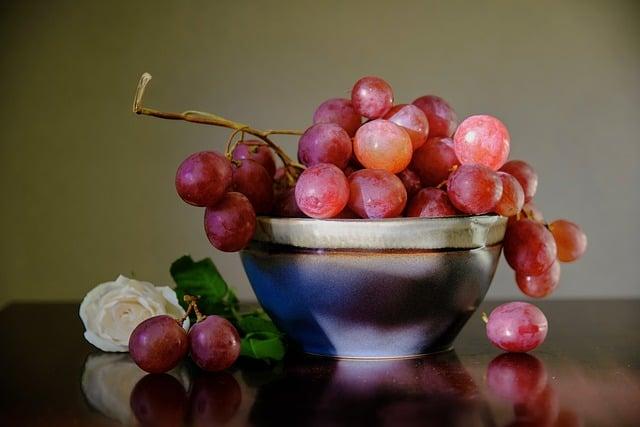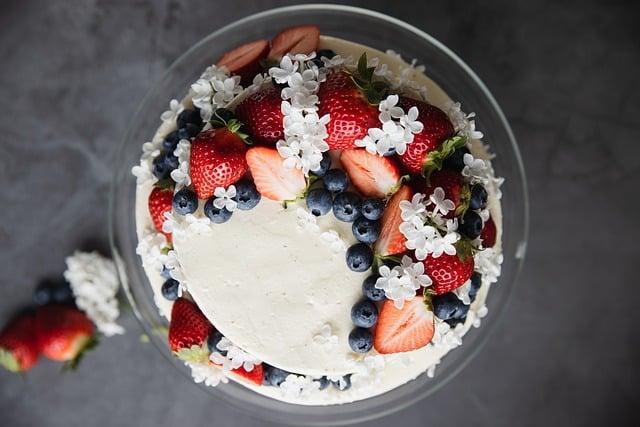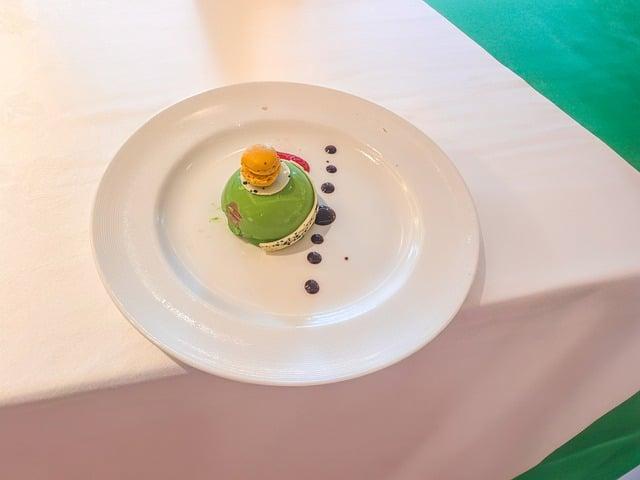In a quaint village, nestled between snow-capped mountains, the townsfolk eagerly awaited Christmas. Each year, they held a contest to determine the most special cake. This time, Clara, a humble baker, decided to create a cake that told a story. She layered rich chocolate with hints of peppermint, adorned it with candied fruits, and topped it with a sprinkle of edible glitter. On Christmas Eve, as the townspeople gathered, Clara unveiled her creation. The cake sparkled like the stars above, and everyone agreed: it was not just a dessert, but a celebration of love and togetherness.
Table of Contents
- Exploring Traditional Christmas Cakes Around the World
- The Sweet Symbolism Behind Festive Flavors
- Modern Twists on Classic Recipes for Holiday Celebrations
- Choosing the Perfect Cake for Your Christmas Gathering
- Q&A

Exploring Traditional Christmas Cakes Around the World
Christmas cakes vary widely across cultures, each bringing its own unique flavors and traditions to the festive table. In the United Kingdom, the classic Christmas cake is a rich fruitcake, often adorned with marzipan and icing, symbolizing the sweetness of the season. Meanwhile, in Italy, the beloved Pandoro and Panettone take center stage, with their fluffy textures and delightful fillings of candied fruits and chocolate. In Germany, the Stollen is a must-have, a spiced bread filled with dried fruits and nuts, often dusted with powdered sugar to resemble the snow of winter.
Across the globe, each cake tells a story of tradition and celebration. In Mexico, the Rosca de Reyes is enjoyed on Epiphany, a sweet bread shaped like a crown, symbolizing the arrival of the Three Wise Men. In the Philippines, the Bibingka is a rice cake traditionally served during the Christmas season, often topped with cheese and salted eggs, embodying the warmth of family gatherings. These cakes not only satisfy the sweet tooth but also serve as a reminder of the rich tapestry of cultural heritage that makes the holiday season so special.

The Sweet Symbolism Behind Festive Flavors
As the holiday season approaches, the air fills with the delightful aromas of spices and sweetness, each flavor carrying its own story and significance. Traditional festive cakes, such as the rich fruitcake or the spiced gingerbread, are not just treats; they embody the essence of togetherness and celebration. The **dried fruits** in a fruitcake symbolize the abundance of the harvest, while the **warm spices** like cinnamon and nutmeg evoke feelings of warmth and comfort, reminiscent of cozy gatherings by the fire. Each bite is a reminder of cherished memories and the joy of sharing with loved ones.
Moreover, the act of baking and sharing these cakes is steeped in tradition, often passed down through generations. The **layered designs** of a Yule log or the intricate decorations on a Christmas cake reflect the creativity and love poured into the process. Ingredients like **chocolate**, representing indulgence, and **marzipan**, symbolizing prosperity, add layers of meaning to these festive delights. As families come together to enjoy these flavors, they not only celebrate the season but also honor the bonds that tie them, making each cake a sweet symbol of unity and joy during this special time of year.

Modern Twists on Classic Recipes for Holiday Celebrations
As the holiday season approaches, many of us find ourselves reminiscing about the comforting flavors of traditional cakes that have graced our tables for generations. This year, why not elevate those beloved recipes with a modern twist? Consider a **spiced gingerbread cake** infused with a hint of orange zest and topped with a velvety cream cheese frosting. The combination of warm spices and citrus not only adds a refreshing brightness but also pays homage to the classic flavors we cherish. Another delightful option is a **chocolate peppermint layer cake**, where rich chocolate ganache meets a refreshing peppermint buttercream, creating a festive treat that’s both indulgent and invigorating.
For those who prefer a lighter touch, a **coconut and lime cake** can bring a tropical flair to your holiday celebrations. This cake, layered with a tangy lime curd and topped with toasted coconut flakes, offers a delightful contrast to the heavier desserts typically served during this season. Alternatively, a **red velvet cake** can be reimagined with a twist of pomegranate, incorporating the jewel-like seeds into the batter and garnishing with a pomegranate glaze. These modern interpretations not only celebrate the essence of traditional holiday cakes but also invite new flavors and textures to the festive table, making each bite a memorable experience.

Choosing the Perfect Cake for Your Christmas Gathering
When it comes to selecting a cake that embodies the spirit of the season, consider flavors and decorations that evoke the warmth and joy of Christmas. **Rich chocolate**, **spiced gingerbread**, and **velvety red velvet** are all excellent choices that can be enhanced with festive touches. Think about incorporating seasonal ingredients like **cinnamon**, **nutmeg**, and **orange zest** to create a cake that not only tastes delightful but also fills the air with holiday aromas. You might also want to explore options like a **fruitcake**, which, despite its mixed reputation, can be a showstopper when made with high-quality dried fruits and nuts, soaked in brandy or rum for an extra kick.
Presentation is key when it comes to holiday cakes. A simple yet elegant design can elevate your dessert to the centerpiece of your gathering. Consider these ideas for decoration:
- **Frosting with a snowy white finish**, reminiscent of a winter wonderland
- **Edible glitter or gold leaf** for a touch of luxury
- **Fresh cranberries and rosemary sprigs** for a pop of color and a hint of freshness
- **Chocolate ganache drizzles** for a rich, indulgent look
By choosing a cake that combines both flavor and festive aesthetics, you’ll create a memorable treat that will delight your guests and enhance the holiday spirit.
Q&A
-
What is the traditional Christmas cake?
The traditional Christmas cake is a rich fruitcake, often made with dried fruits, nuts, and spices. It is typically soaked in alcohol, such as brandy or rum, and is often covered with marzipan and icing for a festive finish.
-
Are there any popular variations of Christmas cake?
Yes, there are several popular variations, including:
- Gingerbread Cake: A spiced cake made with ginger, cinnamon, and molasses.
- Pavlova: A meringue-based dessert topped with whipped cream and seasonal fruits.
- Buche de Noel: A Yule log cake made from sponge cake and filled with cream, often decorated to resemble a log.
-
Can I make a Christmas cake ahead of time?
Absolutely! In fact, many people make their Christmas cakes weeks or even months in advance. This allows the flavors to mature and develop, making the cake even more delicious when served.
-
What are some popular toppings for Christmas cakes?
Common toppings include:
- Royal Icing: A hard icing made from egg whites and powdered sugar.
- Marzipan: A sweet almond paste that adds flavor and texture.
- Fresh Fruits: Such as cranberries, pomegranates, or citrus slices for a festive touch.
As the festive season approaches, the choice of cake becomes a delightful tradition that brings families together. Whether you opt for a classic fruitcake or a modern twist, let your cake be a centerpiece of joy, flavor, and cherished memories this Christmas.

大家好,我是彼得潘,專業的手法身體治療師。我喜歡探索和研究各種主題,並透過與人工智慧的合作分享專業、實用、有趣的文章。我們定期進行人工審核,以確保內容的準確性。如果您發現文章中有任何不準確的地方,請隨時與我們聯繫,我們會及時糾正。您可以透過 [email protected] 與我們聯繫。



